What are the unsolved secrets of the automatic tower?
What comes to everyone's mind when mentioning Egypt is probably the pyramids, one of the most mysterious structures in human history. The internal structure and contents of the pyramid have long been the subject of research by scientists and archaeologists.
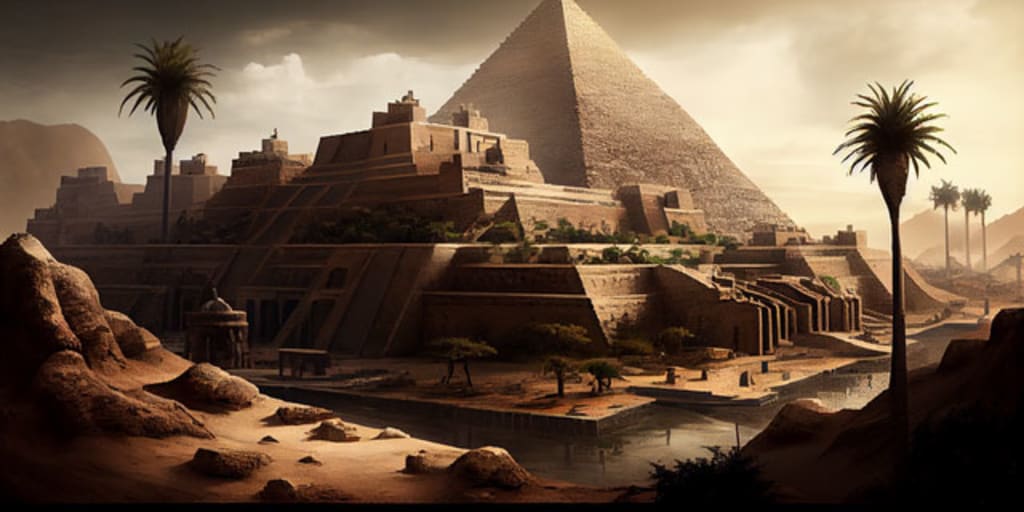
There are more than a hundred pyramids in Egypt, but the most famous are the three pyramids on the Giza Plateau. They are the tombs of three pharaohs from the Fourth Dynasty of ancient Egypt and are known as one of the "Seven Wonders of the Ancient World". Khufu Pyramid is the largest pyramid, each stone used for construction was transported from a limestone quarry across the Nile River, weighing from 2.5 tons to 15 tons.
The rocks were transported by boat and stacked using pulleys and slides. According to geometric principles, the workers accurately aligned the four sides of the pyramid in the four directions east, west, north and south, ensuring the angle of each side of the pyramid was controlled at 52 degrees.
The inside of the Khufu Pyramid is not as regular as the outside but has a maze-like structure. It has three burial chambers located at the top, middle and underground of the pyramid. The tomb above is the tomb of Pharaoh Khufu, the walls and ceiling are made of red granite.
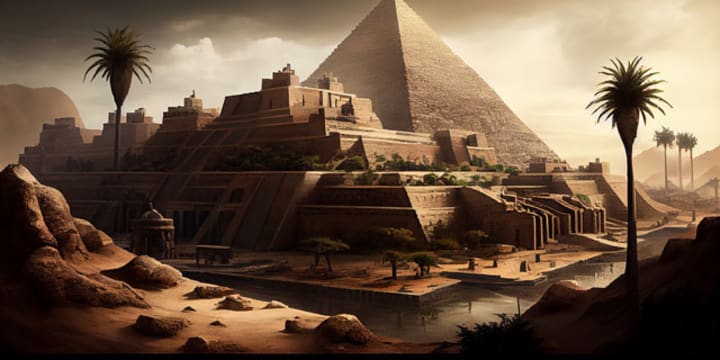
The top part of this tomb supports five layers of giant stone beams to withstand the enormous weight of the pyramid. The entrance is blocked by a large rock. There are also passages and shafts inside the pyramid, some connecting the various burial chambers to the outside, some of the passages are fake, designed to deceive tomb robbers; while other tunnels lead to the sky, believed to allow the pharaoh's soul to ascend to heaven.
The pyramid was originally very smooth and covered with a layer of white limestone, sparkling in the sunlight like a giant crystal. Unfortunately, however, during the Middle Ages, limestone was removed and used to build city walls and mosques in Cairo. So what we see of the pyramid today is only its internal structure, which has lost its once glorious appearance.
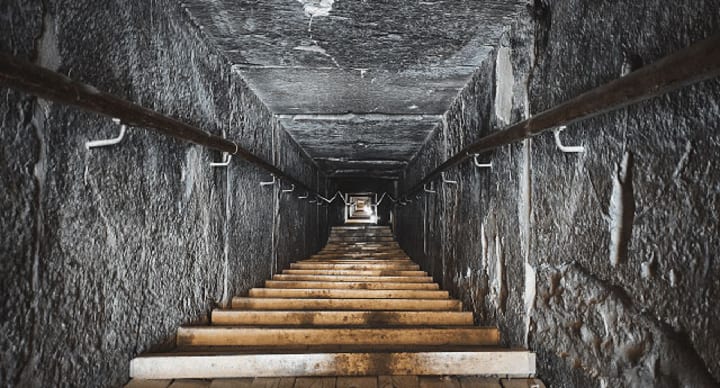
It was never possible to explore the inside of the pyramid
It is said that the first people to explore inside the pyramid were tomb robbers in ancient Egypt. To find valuable burial objects, they did not hesitate to destroy the structure of the pyramid, dig up passages and tombs, and steal many treasures. However, even so, they still could not discover all the secrets of the pyramid.
Due to the pyramid's ingenious design, many false passages and secret rooms were arranged to confuse and deter tomb robbers. Some paths are even equipped with traps such as rolling stones and closed doors to prevent grave robbers from advancing.
In the fifth century BC, when the famous ancient Greek historian Herodotus traveled to Egypt, he recorded the earliest texts about pyramids. He described the construction process and internal structure of the pyramid based on local legends, but his notes were not entirely accurate and even contained errors and exaggerations. It is worth mentioning that he did not personally go inside the pyramid but only observed it from the outside.
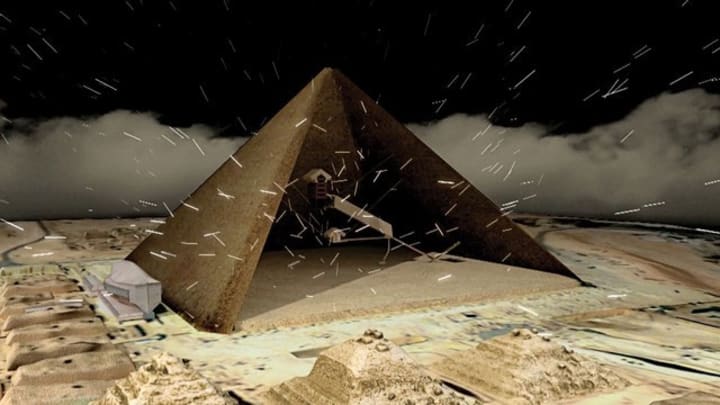
The pyramid has many false passages and secret rooms arranged to confuse tomb robbers.
Modern research on the pyramids began with survey data after Napoleon's arrival in Egypt. He invited scientists and engineers to come, measure and map the pyramid, and discover new passages and burial chambers, but could not reach the core. Their attempts to open the pyramid's stones with simple tools such as gunpowder and iron bars resulted in destruction and pollution.
Since the 20th century, scientists and archaeologists have used advanced technologies for non-invasive detection, such as radar, sonar, X-rays, and CT scanning. These techniques allow us to look inside the pyramid without damaging its surface.
Through these technologies, they discovered some unknown secret spaces or rooms, such as the existence of two spaces in the Pyramid of Khufu, but the purpose and internal details of These spaces remain a mystery.
Detection of Muons
Muon tomography is a non-destructive detection method that uses elementary particles called muons to "see through" the inside of the pyramid. So what exactly is a muon and how can it "see through" the pyramid?
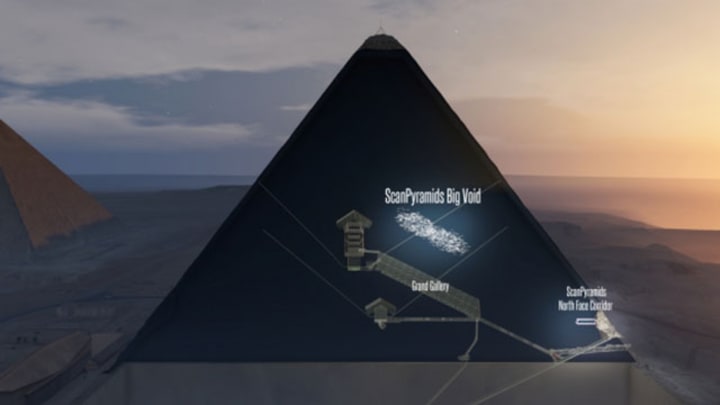
Muons are high-energy elementary particles, capable of penetrating many different types of materials, however the density and nuclear size of different materials will affect the penetration speed of muons.
Scientists used this principle to build a telescope system to detect muons and placed it near the pyramid. By measuring changes in the muon flux, they can deduce the distribution of matter inside the pyramid and even discover previously unknown spaces or rooms.
The system is nearly a hundred times more sensitive than the equipment currently used to detect the pyramid, can analyze it from any angle, and is the first tomographically image a structure this large. .

The project was initiated by an international research group called ScanPyramids. The research team's aim is to use advanced technology to explore the structure and internal contents of the Egyptian pyramids, thereby revealing their construction process and history.
Team members include the Egyptian Ministry of Antiquities, the HIP Institute in France, Nagoya University in Japan and the High Energy Accelerator Research Institute. They received permission and support from the Egyptian government to begin detecting muons in the pyramids.
Scientists have discovered a number of new spaces or secret rooms inside the pyramid through the detection of muons... These discoveries have sparked new speculations about the purpose of the pyramid. pyramid. Some believe that these spaces or rooms may be related to the purpose of the pyramid's construction, religious ceremonies or tomb functions.
One of the most astonishing discoveries was the discovery of a "huge mysterious space" inside the Pyramid of Khufu. This space is located in the upper part of the pyramid, about 40 meters from the top of the pyramid, has a length of about 30 meters, a height of about 6 meters and an unknown width.
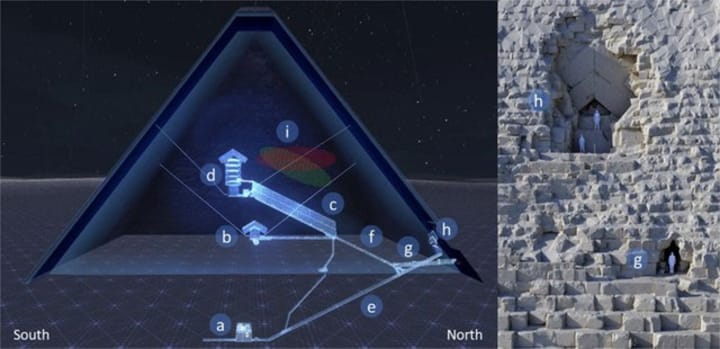
The shape and orientation of this space have not been determined; it can be horizontal or inclined. Additionally, it can be a complete space or can consist of many small spaces. These findings pose new challenges and questions for understanding the function and structure of pyramids.
Scientists used three different muon detectors placed outside, inside and underground of the pyramid to infer the distribution of matter inside the pyramid by measuring changes in the muon stream, thereby discovering some previously unknown spaces or rooms.
The discovery is a major breakthrough and is the first time a new large-scale structure has been discovered inside the Pyramid of Khufu. This space may be an important part of the pyramid or may contain some secret of the pyramid.
However, the specific role and content of this space is still unclear and scientists need further research and analysis to determine its nature. To gain a deeper understanding, they can use more technologies and methods, such as high-resolution muon detection, drone detection or micro-robot detection, to conduct observations. and explore in more detail.
Ancient civilizations have left behind many legacies and many mysteries. While exploring these ancient wonders, we must also pay attention to protecting cultural heritage. Therefore, whether it is the discovery of the pyramid or the discovery of many royal tombs in China, it is all carried out slowly according to a scientific plan. With the advancement of science and technology, we will always have better ways to simultaneously complete the two tasks of exploration and protection, and we can also show more of the magic of these platforms. ancient civilization to the world.
About the Creator
Ken aquariums
Telling stories my heart needs to tell <3 life is a journey, not a competition
If you like what you read, feel free to leave a tip,I would love some feedback
https://sites.google.com/view/hk-decor/trang-ch%E1%BB%A7
Enjoyed the story? Support the Creator.
Subscribe for free to receive all their stories in your feed. You could also pledge your support or give them a one-off tip, letting them know you appreciate their work.






Comments (1)
Very inspiring read, thanks for sharing. Please develop it further so I can have more of this interesting knowledge